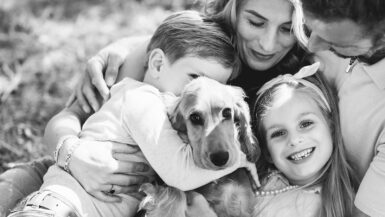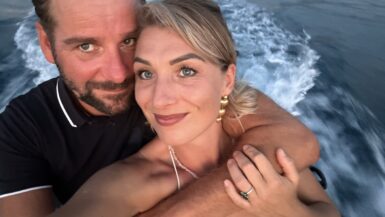In our previous video, you saw us arriving in beautiful Menorca — a place that instantly stole our hearts. We were so happy to set foot on land again… but not for long. A storm was coming, and we had to get back to Luna before it hit.
When the weather turns, you definitely want to be on board — ready to act if needed.
Anyone who’s been sailing the Mediterranean lately has probably noticed it: the weather just isn’t as predictable as it used to be. The calm, steady summers with gentle breezes are becoming rare. Now, sudden storms, heavy rain, and shifting winds are the new normal.
The Mediterranean is actually warming faster than most seas in the world — up to 25% faster than the global average. And when seawater warms, it evaporates more quickly, adding humidity and energy to the atmosphere — the perfect recipe for storms and downpours. Add in rising land temperatures, and you get strong contrasts between warm and cold air. That’s what triggers those famous Mistral winds… or even Medicanes — Mediterranean hurricanes — which are showing up more often, especially in autumn.
Another worrying sign is the CAPE index, a measure of energy stored in the atmosphere. It’s been reaching record highs across the Med, meaning the air is more unstable than ever. When that energy releases, it can create supercells — intense, highly localized storms that can appear almost out of nowhere.
One minute you’re sailing under a calm blue sky, and the next, you’re surrounded by lightning, torrential rain, and winds strong enough to tear sails.
We’ve really noticed this change ourselves. Even short passages now require constant weather checks because conditions can shift dramatically within hours.
(Here we show footage of different storms we’ve encountered — dark skies, lightning, rough seas…)
So what does this mean for sailors? It means the game has changed. Weather patterns are less reliable — calm days can turn wild in just a few hours. Storms form faster, sometimes with gusts over 40 knots. And anchorages that look protected on the map can suddenly become risky when the wind shifts.
For us, it means planning smarter, checking forecasts more often, and always — always — having a plan B. It’s a new way of sailing: not on routine, but on awareness and flexibility.
After this stormy chapter, we arrived safely in Port Segur de Calafell, Luna’s hometown for more than half a year. It’s here we had to say goodbye for a while, as I needed to travel back to the Netherlands for major surgery.
But enough about storms — let’s go back to Menorca!
After all that rain, I was definitely ready for a romantic little beach. How about this one?
But first — no one sails on an empty stomach! Time to cook something for my little crew.
It was a calm trip, and by late evening we arrived in Cala Barcas. Luna’s forward lights guided us safely into the bay — absolutely magical. There’s something so special about discovering new anchorages, especially when they look just like the picture.
Next stop: Sóller — and wow, what a place! We weren’t the only ones who thought so… there were more tenders on that dock than we’ve ever seen before!
And as if that wasn’t enough, we witnessed an incredible water show — a firefighting plane scooping up seawater to battle a nearby fire. I once heard a story about a diver who got accidentally picked up by one of those planes and ended up in the trees of the forest — true or just a wild tale?
We’re slowly making our way toward Barcelona, where Luna will stay for quite a while. But before that — there are plenty more adventures to come.






Leave a reply